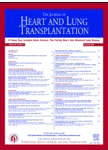Hypothermia induced endothelial dysfunction

Hypothermia is used to preserve organs for transplant and it is the oldest method to protect organs during complex pediatric cardiac surgery. Loss of tissue function and tissue edema are common complications in children undergoing cardiac surgery and heart transplantation. The present study was designed to examine the effects of methylprednisolone (MP) and Tacrolimus (TAC) on endothelial cell function and morphology after deep hypothermia and rewarming. Human umbilical vein endothelial cells (HUVECs) were pretreated with MP and/orTAC and incubated either within a specially designed bioreactor or in monolayers. They were then exposed to a dynamic cooling and rewarming protocol. Immunocytochemistry, time lapse video microscopy within the SlideReactor bioreactor system, cell permeability and adherence assays and western blot analysis were performed. Confluent endothelial cells exposed to hypothermia displayed elongated cell shapes with intercellular gap formation, increased endothelial cell-layer permeability and loss in adherence. Upon rewarming, however, endothelial cell integrity was restored. Opening and closing of intercellular gaps was dependent on ERK 1/2 activation and connexin 43 (Cx43) expression. The combined treatment with MP and TAC inhibited these hypothermia-induced changes. These results suggest that MP and TAC inhibit hypothermia induced endothelial gap formation via pERK 1/2 inhibition and connexin 43 stabilization. Application of combined drugs that affect multiple targets may therefore be considered as a possible new therapeutic strategy to prevent endothelial dysfunction after hypothermia and rewarming.